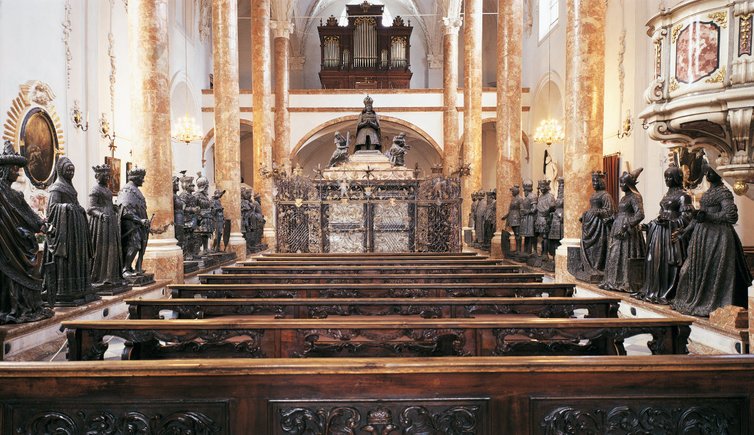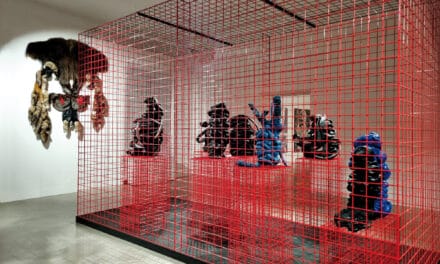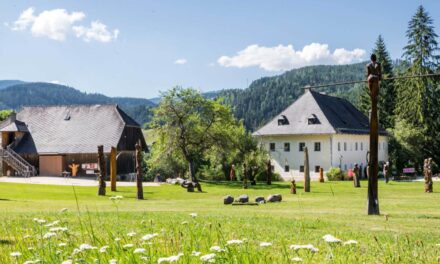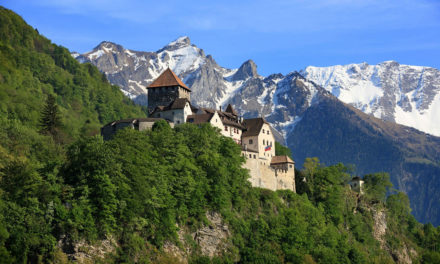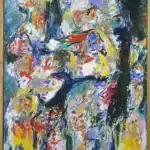The Hofkirche is best known for the funerary monument of Emperor Maximilian I and the "Black Mander".
On the edge of Innsbruck's old town, between the Folk Art Museum and the Imperial Palace, stands the famous Hofkirche. On his deathbed, Emperor Maximilian I (1459 - 1519), one of Tyrol's most important rulers, expressed the wish to be buried in St. George's Chapel in Wiener Neustadt Castle. This wish was granted, but the 40 bronze figures he had commissioned for his tomb were too heavy for this place.
His grandson, Emperor Ferdinand I, therefore had his own burial church with an empty tomb (cenotaph) erected in Innsbruck. The 40 larger-than-life figures were never completed - 28 were. These "Black Men" flank the tomb and make the Hofkirche colloquially known as the "Black Man Church". The expression is not entirely correct, as the illustrations also show some women. The bronze figures include members of Emperor Maximilian's family (including his two wives Mary of Burgundy and Bianca Maria Sforza), representatives of Christian values (e.g. the crusader Gottfried von Bouillon) and noblemen from other princely houses, thus asserting Emperor Maximilian's claim to them.
Today, the Hofkirche is the most important monument in Tyrol and the grandest imperial tomb in Europe. It is also a magnificent example of European court art, for which Maximilian I and Ferdinand I employed the best artists of their time, such as Albrecht Dürer and Peter Vischer the Elder. Another highlight: the Ebert organ from the Renaissance, one of the most important and oldest playable organs in the world. Concerts are still given on this organ today. And since 1823, the Hofkirche has been associated with another important figure in Tyrol's history: The Tyrolean freedom fighter Andreas Hofer found his final resting place here...

